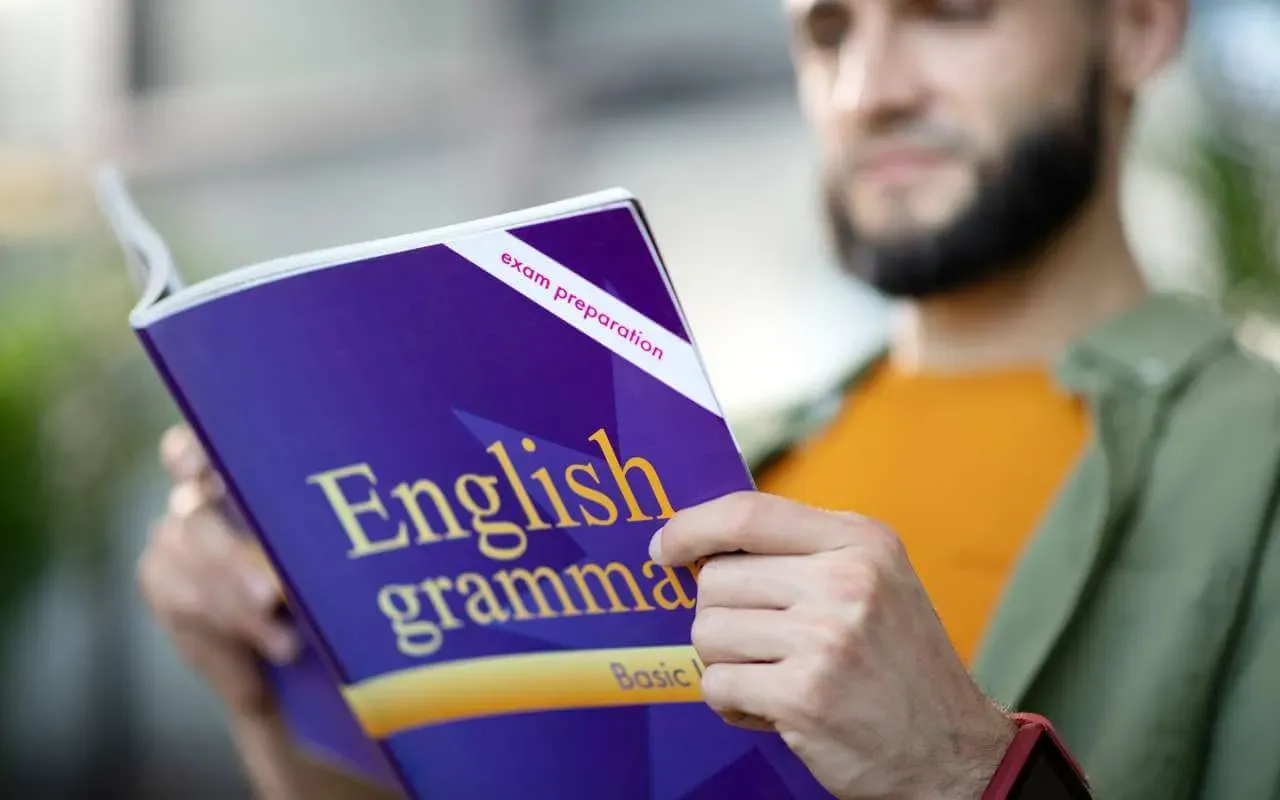What Is a Coordinating Conjunction?

Grammar is essential for effective writing. It ensures clear communication and helps create powerful and formal sentences. One important overlooked rule of grammar is coordinating conjunctions. These rules act as the “glue” that holds different parts of a sentence together. They join words, phrases, and clauses with equal grammatical weight, adding depth and complexity to our writing.
In this guide, we’ll explain coordinating conjunctions in detail—what they are, how they’re used, and why they matter. We’ll also share additional grammar resources you can use to use language effectively and become a better writer.
Looking at options to finance your education? Start with a Start with a scholarship application!

Understanding Coordinating Conjunctions
Conjunctions are essential in English sentences. They are words that link two or more similar elements within a sentence. These elements can be individual words, phrases, or clauses that have equal grammatical importance.
A useful way to remember the most common seven coordinating conjunctions is through the acronym FANBOYS. Each of these conjunctions serves a specific purpose:
- For - it gives a reason in a sentence
- And - adds something more
- Nor - introduces an alternative to a negative idea
- But - shows a contrast between two sentences
- Or - presents two or more elements in an alternative or choice
- Yet - shows contrast and introduces a contradicting idea
- So - indicates consequence, result, or effect
Coordinating conjunctions coordinate different parts of the sentence that can function as complete thoughts on their own, creating a compound sentence. Let’s see how coordinating conjunctions work with some of the following examples.
- I am tired, but I can’t go to sleep yet. The conjunction ‘but’ connects two independent clauses: ‘I am tired’ and ‘I can’t go to sleep yet.’
- She loves chocolate and ice cream. The conjunction ‘and’ connects the clauses’ She loves chocolate’ and ‘She also enjoys ice cream.’
These examples show how coordinating conjunctions add complexity and variety to our sentences. They enable us to express multiple related ideas in a concise manner, avoiding repetition and improving the flow of our writing.
Get Matched to Thousands of Scholarships
Create your Bold.org profile to access thousands of exclusive scholarships, available only on Bold.org.
Create Free ProfileThe Role of Coordinating Conjunctions in Connecting Ideas
Coordinating conjunctions serve to connect independent clauses, which are complete thoughts on their own, as well as main and subordinate clauses, ensuring clarity and coherence in writing. Understanding their function enhances the structure of sentences and relationships between ideas.
For example:
- She writes.
- He reads.
Coordinating conjunctions link these independent clauses to express related thoughts in a single sentence without compromising clarity. When you write:
- She writes, and he reads.
You combine two independent actions that are happening concurrently, using the coordinating conjunction “and” to signal that these actions are connected, not limited.
Another use is by connecting subordinate clauses (they do not express a complete thought on their own and need to be attached to a main clause). For example:
- She writes while he reads.
Here, “while he reads” is the subordinate clause that cannot stand alone. The difference is that the second clause is linked to the main clause, “She writes,” but without a conjunction, it feels incomplete. However, the clause “She writes” makes sense alone.
Now, let’s introduce a coordinating conjunction into this mix:
- She writes, so he reads in the other room.
In this case, “so” is used to show cause and effect between two independent clauses—the fact that she writes causes him to read elsewhere.
It’s crucial to recognize that both a coordinating conjunction and a subordinating conjunction can also pair with punctuation. Take this example:
- He reads; therefore, she writes in silence.
The semicolon before “therefore” functions alongside the coordinating conjunction to neatly join an independent clause with one that is subordinate, offering separation and connection where needed.
When used in this way, coordinating conjunctions do more than just link sentences; they provide nuance and depth by showing how word groups relate to each other—be it through addition, contrast, choice, or cause and effect.
The understanding of relationships between clauses enhances the flow of writing and supports more sophisticated expression. Understanding how coordinating conjunctions join elements together is crucial for achieving this improvement.

Examples of Coordinating Conjunction Usage in Sentences
Coordinating conjunctions serve as bridges and connect words, phrases, and clauses of equal grammatical rank. Let’s explore the different ways they can be used to connect ideas in sentences.
Using Coordinating Conjunctions to Join Words
The simplest way of using coordinating conjunctions is to join similar words or ideas. Take a look at these examples:
- “I like apples and oranges.” Here, the conjunction ‘and’ connects two words.
- “She is smart but lazy.” In this complete sentence, ‘but’ links two adjectives that describe the same person.
Connecting Phrases with Coordinating Conjunctions
Beyond single words, coordinating conjunctions can be used to join related phrases within a sentence. Here are examples:
- “He will take a vacation either in summer or in winter.” The conjunction or links two prepositional phrases.
- “She likes playing tennis and going for a run after work.” The conjunction and connects two gerund phrases.
Forming Compound Sentences with Coordinating Conjunctions
Coordinating conjunctions play a crucial role in forming a compound sentence by combining independent clauses. Here are some examples:
- “I was tired, so I went to bed early.”
- “She didn’t study for the test, but she passed anyway.”
In each case above, the coordinating conjunctions (so/ but) link two independent clauses that could each stand alone as a separate sentence, which means that the first independent clause, “I was tired,” has meaning without the second independent clause, “I went to bed early.”
Knowing how to effectively use coordinating conjunctions can greatly enhance your writing, allowing you to express complex ideas with precision and elegance. Practice using these conjunctions in your sentences to gain fluency and build confidence in your writing skills.

Best Practices for Using Coordinating Conjunctions Effectively
In your quest to master the usage of coordinating conjunctions, here are some best practices you should bear in mind.
Understanding Commas and Coordinating Conjunctions
One of the cornerstones of grammar is the correct punctuation of compound sentences. When linking two independent clauses with a coordinating conjunction, it’s essential to precede the conjunction with a comma. For instance:
- Incorrect: We decided to hike up the mountain it was a beautiful day.
- Correct: We decided to hike up the mountain **, and** it was a beautiful day.
In this sentence, “We decided to hike up the mountain” and “it was a beautiful day” can exist as two separate sentences; therefore, they are independent clauses. The coordinating conjunction ‘and’ joins them together with a comma placed before ‘and.’
Avoiding Run-On Sentences
A common pitfall in writing is creating run-on sentences, which occur when independent clauses are joined without an appropriate punctuation or conjunction. This makes your writing confusing and difficult to read.
Here’s how to correct a run-on sentence using a coordinating conjunction:
- Run-On: She ran out of coffee she went to the store.
- Corrected: She ran out of coffee**, so** she went to the store.
In this corrected version, ‘so’ acts as a coordinating conjunction. It joins these two related thoughts into one coherent sentence.
Preventing Comma Splices
A comma splice happens when two independent clauses are joined by just a comma without an accompanying coordinating conjunction. It’s one of the most common grammar mistakes, but it can be easily prevented by introducing a coordinating conjunction.
- Comma Splice: I love reading books. I spend hours in the library.
- No Comma Splice: I love reading books**, and** I spend hours in the library.
The coordinating conjunction ‘and’ not only connects the two independent clauses but also prevents a comma splice, making the sentence grammatically sound. Mastering these best practices for using coordinating conjunctions will help you write clear, engaging, and grammatically correct sentences.
Check out more tips for writing and financial education at Bold.org!
Enhance Your Writing Skills with a Solid Understanding of Coordinating Conjunctions
Understanding the role of coordinating conjunctions is vital to enhancing your writing abilities. Think of these conjunctions as the glue that holds your sentences together, giving them both structure and flow.
Remember the seven coordinating conjunctions FANBOYS acronym (for, and, nor, but, or, yet, so) as your go-to guide for coordinating conjunctions. Practicing using these in your writing will not only enhance your sentence construction skills but also elevate the overall quality of your written work.

Frequently Asked Questions About Coordinating Conjunctions
What is the Oxford comma, and why does it matter in writing?
The Oxford comma, often referred to as the serial comma, is the comma used immediately before a coordinating conjunction (usually “and” or “or”) in a list of three or more items. For example, it can be placed before the conjunction in a list like “I like to eat apples, oranges, and bananas,” the comma ensures clarity, especially in sentences with a series of coordinating conjunctions.
How do conjunctive adverbs enhance the coherence of writing?
Conjunctive adverbs, such as “however” or “therefore,” clarify relationships between clauses. They improve coherence, particularly in longer, complete sentences.
When should I use the Oxford comma, and what note should be remembered?
Use the Oxford comma in lists to avoid ambiguity, especially with series coordinating conjunctions. Remember to adhere to the preferred style guide, as some may advocate for using the serial comma while others may not.
What are the most common coordinating conjunctions?
The most common coordinating conjunctions are as follows: For, And, Nor, But, Or, Yet, and So. These conjunctions are essential for joining words, phrases, or clauses of equal importance within a sentence, facilitating clear and effective communication.
Take the first step towards financing your education by applying for scholarships today at Bold.org!